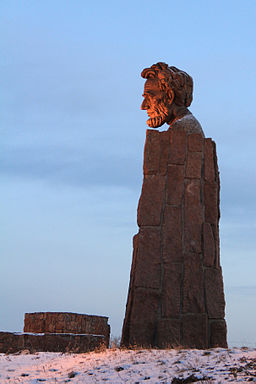As we were driving through Eastern Colorado, we pass a road sign marking a turn to
Bent's Fort. Andrew excitedly starts telling us all about Bent's Fort. (I guess he did pay attention in history class.) We turned around and followed the signs. If it weren't for Andrew, we'd have driven by and never known there was something to see.
Bent's Old Fort
William and Charles Bent, along with Ceran St. Vrain, built Bent's Fort in 1833 to trade with Plains Indians and trappers. The adobe fort quickly became the center of the Bent, St. Vrain Company's expanding trade empire that included Fort St. Vrain to the north and Fort Adobe to the south, along with company stores in New Mexico at Taos and Santa Fe. The primary trade was with the Southern Cheyenne and Arapaho Indians for buffalo robes.
For much of its 16-year history, the fort was the only major permanent white settlement on the Santa Fe Trail between Missouri and the Mexican settlements. The fort provided explorers, adventurers, and the U.S. Army a place to get needed supplies, wagon repairs, livestock, good food, water and company, rest and protection in this vast "Great American Desert". During the Mexican-American War in 1846, the fort became a staging area for Colonel Stephen Watts Kearny's "Army of the West".







